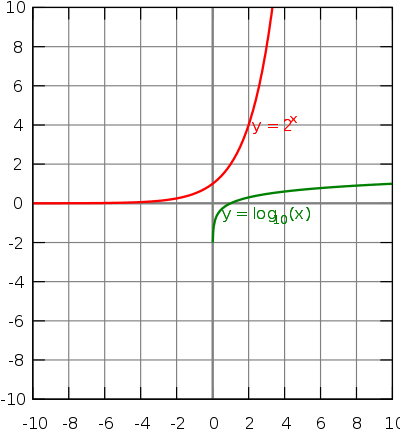Operations With Exponential Function
An exponential function is a function where a constant base (b) is raised to a variable.
Multiplication
Firstly, is which is . So when you multiply a base by the same base you add the variables. To clarify, here is an example with numbers:
| 1 | 2 | 4 | 8 | 8 |
| 2 | 4 | 16 | 64 | 64 |
Division
Secondly is . So when a base is divided by the same base you subtract the variables.
Here is an example with numbers: .
Base raised to two powers
Thirdly is which is . So when a base with a variable is raised to a variable you multiply the variables. Here is another example with numbers: (when x = 1) .
Multiple bases
Fourthly when it is the same as . Here is an example with numbers: . There is a similar situation with division: . So when you multiply or divide two different bases raised to the same variable you can multiply or divide them first and then raise them to the variable.
Fractional exponents
The last case is when x is presented as a fraction, you can make a square root function, for example becomes . However it is customary to only use the positive root and so is defined as . Another similar case is when the fraction has a constant (designated as c) other than 1 in the numerator , for example so .
The Laws of Exponents
The rules that have been suggested above are known as the laws of exponents and can be written as:
- where c is a constant
Solving exponential equations
In order to solve an exponential equation you need to make sure that all the bases are the same. Then you can remove the base and solve for the variable. Here is an example:
Solve for x.
Now we convert 16 to a base 2 raised to a number.
Now we can remove the base. So we have:
Finally solve for x.
Graphing an Exponential Function
When you graph an exponential function you use the same methods as with a regular function. There is a graph below that you can look at.
Logarithmic Functions

In mathematics you can find the inverse of an exponential function by switching x and y around: becomes . The problem arises on how to find the value of y. The logarithmic function solved this problem. All conversions of logarithmic function into an exponential function follow the same pattern: becomes . If a log is given without a written b then b=10. Also with logarithmic functions, b > 0 and . There are 2 cases where the log is equal to x: and .
Laws of Logarithmic Functions
When X and Y are positive.
Change of Base
When x and b are positive real numbers and are not equal to 1. Then you can write as . This works for the natural log as well. here is an example:
now check
Dividing and Factoring Polynomials / Sequences and Series / Logarithms and Exponentials / Circles and Angles / Integration